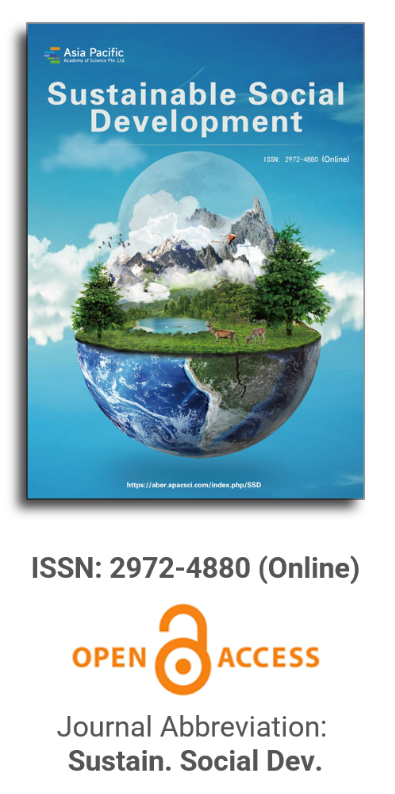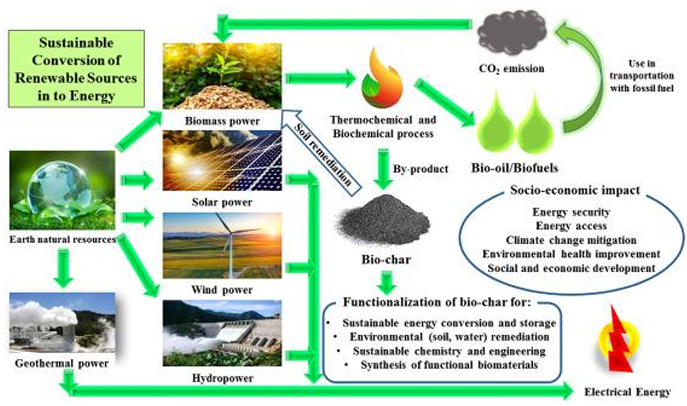
Asia Pacific Academy of Science Pte. Ltd. (APACSCI) specializes in international journal publishing. APACSCI adopts the open access publishing model and provides an important communication bridge for academic groups whose interest fields include engineering, technology, medicine, computer, mathematics, agriculture and forestry, and environment.

Troubled waters? The disproportionate impact of lead water pollution: Evidence from three American communities
Vol 2, Issue 3, 2024
Download PDF
Abstract
Although water is considered essential to life and an important natural resource, disadvantaged communities, such as low-income and minority communities, are disproportionately burdened by lead exposure in drinking water. In this paper, we highlight case studies that have received national press coverage as well as recent examples of community lead poisoning hazards that are still ongoing across various regions of the US. We show through these three case studies of Flint, Michigan, Washington, D.C., and Birmingham, Alabama, that the severity and frequency of this pervasive public health problem are highly concentrated in minority and low-income populations, and thus they bear the brunt of the socio-economic impacts. We identify the use of sensors to improve detection of hazardous materials and decrease inequities in drinking water contamination. To address water-related equity issues, we call for a sustainable community capacity approach that consists of shared governance between those who live in a community and stakeholders, such as businesses and health services, who have vested interests in it. We conclude by highlighting ways that a community could build collective social capital, safeguarding its environment from lead poisoning through health literacy education. Promoting water literacy is highly significant since water knowledge is crucial towards achieving water sustainability and equity.
Keywords
References
- United States Environmental Protection Agency. Stagnation Time, Composition, pH and Orthophosphate Effects on Metal Leaching from Brass. United States Environmental Protection Agency; 1996.
- Jacobs DE, Clickner RP, Zhou JY, et al. The prevalence of lead-based paint hazards in US housing. Environmental Health Perspectives. 2002; 110(10): A599-606.
- The aging water infrastructure: Out of sight, out of mind? Available online: https://www2.deloitte.com/us/en/insights/economy/issues-by-the-numbers/us-aging-waterinfrastructure-investment-opportunities.html (accessed on 16 January 2024).
- Wani AL, Ara A, Usmani JA. Lead toxicity: A review. Interdisciplinary Toxicology. 2015; 8(2): 55-64.
- Jaishankar M, Tseten T, Anbalagan N, et al. Toxicity, mechanism and health effects of some heavy metals. Interdisciplinary Toxicology. 2014; 7(2): 60-72. doi: 10.2478/intox-2014-0009
- Tchounwou PB, Yedjou CG, Patlolla, et al. Heavy Metal Toxicity and the Environment. In: Luch A (editor). Molecular, Clinical and Environmental Toxicology. Experientia Supplementum. Springer; 2012.
- Mason LH, Harp JP, Han DY. Pb neurotoxicity: Neuropsychological effects of lead toxicity. BioMed Research International. 2014; 840547. doi: 10.1155/2014/840547
- DC Water. Health Effects of Exposure to Lead in Drinking Water. Available online: https://www.dcwater.com/health-effects-exposure-lead-drinking-water (accessed on 16 January 2024).
- United States Environmental Protection Agency. Basic Information about Lead in Drinking Water. Available online: https://www.epa.gov/ground-water-and-drinking-water/basic-information-about-lead-drinking-water (accessed on 16 January 2024).
- Rodriguez J, Mandalunis PM. A Review of Metal Exposure and Its Effects on Bone Health. Journal of Toxicology. 2018; 4854152. doi: 10.1155/2018/4854152
- Sanders T, Liu Y, Buchner V, et al. Neurotoxic effects and biomarkers of lead exposure: A review. Reviews on Environmental Health. 2009; 24(1): 15-45. doi: 10.1515/REVEH.2009.24.1.15
- World Health Organization. Almost 1 million people die every year due to lead poisoning, with more children suffering long-term health effects. Available online: https://www.who.int/news/item/23-10-2022-almost-1-million-people-die-every-year-due-to-lead-poisoning--with-more-children-suffering-long-term-health-effects (accessed on 15 January 2024).
- Center for Disease Control and Prevention. Populations at Higher Risk 2021. Available online: https://www.cdc.gov/nceh/lead/prevention/populations.htm (accessed on 15 January 2024).
- Center for Disease Control and Prevention. Lead in Drinking Water. Available online: https://www.cdc.gov/nceh/lead/prevention/sources/water.htm (accessed on 16 January 2024).
- United States Environmental Protection Agency. EPA OGWDW, Understanding the Lead and Copper Rule (40 CFR Part 141 Subpart 1) lcr101_factsheet_10.9.19.final_.2 September 2020. Available online at: www.epa.gov (accessed on 15 January 2024).
- United States Environmental Protection Agency. Sources of Lead in Drinking Water, epa_lead_in_drinking_water_final. Available online: www.epa.gov (accessed on 15 January 2024).
- Center for Disease Control and Prevention. Drinking Water Standards and Regulations. Available online: https://www.cdc.gov/healthywater/drinking/public/regulations.html (accessed on 16 January 2024).
- Mulvihill K. Causes and Effects of Lead in Water. Natural Resources Defense Council, Washington DC. 2023. Available online: https://www.nrdc.org/stories/causes-and-effects-lead-water#problem (accessed on 16 January 2024).
- Pascoe A. Six Years Later, Flint Still Doesn’t Have Clean Water: One of the Worst Environmental Injustices in the 21st Century. Climate-Xchange; 2020.
- Renner, R. Out of Plumb: When Water Treatment Causes Lead Contamination. Environmental Health Perspectives. 2009; 117(12): A542-A547. doi: 10.1289/ehp.117-a542
- Renner R. Plumbing the Depths of DC’s Drinking Water Crisis. Environmental Science and Technology. 2004; 38(12): 225A-227A. doi: 10.1021/es040525h
- Shaver K, Hedgpeth D. DC’s Decade-Old Problem of Lead in Water Gets New Attention during Flint Crisis. The Washington Post; 2016.
- US Government Accountability Office. Drinking Water: EPA Could Use Available Data to Better Identify Neighborhoods at Risk of Lead Exposure. Available online: https://www.gao.gov/products/gao-21-78 (accessed on 16 January 2024).
- Frostenson S, Cunningham R. Where is the lead exposure risk in your community? Washington State Department of Health. Available online: https://publichealthmaps.org/motw-2021/2021/4/7/7-april-2021-where-is-the-lead-exposure-risk-in-your-community-united-states (accessed on 15 January 2024).
- Pieper KJ, Martin R, Tang M, et al. Evaluating Water Lead Levels during the Flint Water Crisis. Environmental Science & Technology. 2018; 52: 8124-8132. doi: 10.1021/acs.est.8b00791
- Flint Water Advisory Task Force, State of Michigan. Final Report 21 March 2016. Available online: www.michigan.gov (accessed on 15 January 2024).
- Pieper, KJ, Tang, M, Edwards, MA. Flint Water Crisis Caused by Interrupted Corrosion Control: Investigating “Ground Zero” Home. Environmental Science & Technology. 2017; 51: 2007-2014. doi: 10.1021/acs.est.6b04034
- Olson TM, Wax M, Yonts J, et al. Forensic Estimates of Lead Release from Lead Service Lines during the Water Crisis in Flint, Michigan. Environmental Science & Technology Letters. 2017; 4: 356-361. doi: 10.1021/acs.estlett.7b00226.
- Wisely J. Was Flint River Water Good Enough to Drink? Detroit Free Press; 2016.
- Hatch GB. Inhibition of Lead Corrosion with Sodium Hexametaphosphate. Journal American Water Works Association. 1941; 33(7): 1179-1187. doi: 10.1002/j.1551-8833.1941.tb19643.x
- Edwards M, McNeill LS. Effect of Phosphate Inhibitors on Lead Release from Pipes. Journal American Water Works Association. 2002; 94(1): 79-90. doi: 10.1002/j.1551-8833.2002.tb09383.x
- The Water Works Research Foundation. Chemistry of Corrosion Inhibitors in Potable Water. Available online: https://www.waterrf.org/resource/chemistry-corrosion-inhibitors-potable-water (accessed on 16 January 2024).
- Mishra D, Kommineni S. Strategies to control red water occurrences in distribution system. In: Proceedings of the Water Quality Technology Conference and Exposition 2007: Fast Tracks to Water Quality; 4-8 November 2007; Charlotte, North Carolina, USA.
- Office of Research and Development, United States Environmental Protection Agency. Control of Lead and Copper in Drinking Water. Available online: https://nepis.epa.gov/Exe/ZyNET.exe/30004L0M.TXT?ZyActionD=ZyDocument&Client=EPA&Index=1991+Thru+1994&Docs=&Query=&Time=&EndTime=&SearchMethod=1&TocRestrict=n&Toc=&TocEntry=&QField=&QFieldYear=&QFieldMonth=&QFieldDay=&IntQFieldOp=0&ExtQFieldOp=0&XmlQuery=&File=D%3A%5Czyfiles%5CIndex%20Data%5C91thru94%5CTxt%5C00000009%5C30004L0M.txt&User=ANONYMOUS&Password=anonymous&SortMethod=h%7C-&MaximumDocuments=1&FuzzyDegree=0&ImageQuality=r75g8/r75g8/x150y150g16/i425&Display=hpfr&DefSeekPage=x&SearchBack=ZyActionL&Back=ZyActionS&BackDesc=Results%20page&MaximumPages=1&ZyEntry=1&SeekPage=x&ZyPURL (accessed on 15 January 2024).
- Holm TR, Schock MR. Potential Effects of Polyphosphate Products on Lead Solubility in Plumbing Systems. Journal American Water Works Association. 1991; 83(7): 76-82. doi: 10.1002/j.1551-8833.1991.tb07182.x
- Cantor A, Denig-Chakroff F, Vela R, et al. Use of Polyphosphate in Corrosion Control. Journal American Water Works Association. 2000; 92(2): 95-102. doi: 10.1002/j.1551-8833.2000.tb08820.x
- Hozalski R, Esbri-Amador E, Chen CF. Comparison of Stannous Chloride and Phosphate for Lead Corrosion Control. Journal American Water Works Association. 2005; 97(3): 89-103. doi: 10.1002/j.1551-8833.2005.tb10847.x
- Heberling JA, Barron P, Peters RW. Pipe Flow-Through Investigation: Determining Potential Water Quality Problems Involved with Switching from Chlorine to Chloramines at the Birmingham Water Works Board (BWWB) Part II. In: Proceedings of the AWWA 2009 Water Quality Technology Conference; 15-18 November 2009; Seattle, Wash, USA.
- Lee J, Negussie T, Zaru D. Flint Residents Grapple with Water Crisis 9 Years Later: ‘No Justice’. Available online: https://abcnews.go.com/US/water-crisis-plagues-flint-residents-decade/story?id=98724950 (accessed on 15 January 2024).
- Nakamura D. Exceeds EPA Lead Limit. The Washington Post. Available online: https://www.washingtonpost.com/archive/politics/2004/01/31/water-in-dc-exceeds-epa-lead-limit/1e54ff9b-a393-4f0a-a2dd-7e8ceedd1e91/ (accessed on 15 January 2024).
- Baron V. DC Water’s Own Data Suggest Widespread Lead Contamination. Natural Resources Defense Council. Available online: https://www.nrdc.org/bio/valerie-baron/dc-waters-own-data-suggest-widespread-lead-contamination (accessed on 15 Jan 2024).
- Brown MJ, Raymond J, Homa D, et al. Association between Children’s Blood Lead Levels, Lead Service Lines, and Water Disinfection, Washington, DC, 1998–2006. Environmental Research. 2011; 111(1): 67-74. doi: 10.1016/j.envres.2010.10.003
- United States Environmental Protection Agency. Lead in DC Drinking Water. Available online: https://archive.epa.gov/region03/dclead/web/pdf/printable_reducing_pb-roles_jul09.pdf (accessed on 15 January 2024).
- Triantafyllidou S, Lambrinidou Y, Edwards MA. Lead (Pb) Exposure through Drinking Water: Lessons to be Learned from Recent US Experience. Global NEST Journal. 2009; 11(3): 341-348.
- Edwards MA, Triantafyllidou S, Best D. Elevated Blood Lead in Young Children due to Lead-Contaminated Drinking Water: Washington, DC, 2001–2004. Environmental Science & Technology. 2009; 43(5): 1818-1823. doi: 10.1021/es802789w
- Guidotti TL, Calhoun T, Davies-Cole JO, et al. Elevated Lead in Drinking Water in Washington, DC, 2003–2004: The Public Health Response. Environmental Health Perspectives. 2007; 115(5): 695-701. doi: 10.1289%2Fehp.8722
- Heberling J. Chloramination and Corrosion: Case Studies, Utility Experience, and Statistical Comparisons with Chlorination [PhD thesis]. University of Alabama at Birmingham; 2014.
- Heberling J, Barron P. Measuring Metal Release and Biological Activity in Decades Old Cast Iron Pipes Subjected to a Disinfectant Change. 2012; 122: 9. doi: 10.2495/UW120121
- Woernle C, Rao R, White J, et al. Final Report: Child Lead Exposure Study. Available online: https://www.cdc.gov/niosh/docket/archive/pdfs/NIOSH-071/0071-090191-Williamson-Attach4.pdf (accessed on 15 January 2024).
- Toner C. Children in these Alabama ZIP codes had lead in their blood. Available online: https://www.al.com/news/2016/02/alabama_lead_exposure_children.html (accessed on 15 January 2024).
- Cabrera, Y. Lead keeps poisoning children. It doesn’t have to Grist. Available online: https://grist.org/solutions/soil-lead-contamination-poison-children/ (accessed on 15 January 2024).
- Denchak M. Flint Water Crises: Everything You Need to Know. Available online: https://www.nrdc.org/stories/flint-water-crisis-everything-you-need-know (accessed on 15 January 2024).
- Mock. Short Cuts Could Cause Permanent Damages: The water crisis in Flint, Mich., is the latest in a long history of African Americans being exposed to toxic poisoning. Crisis. 2016; 123(1): 5-6.
- Hanna-Attisha M, LaChance J, Sadler RC, et al. Elevated Blood Lead Levels in Children Associated with the Flint Drinking Water Crisis: A Spatial Analysis of Risk and Public Health Response. American Journal of Public Health. 2016; 106(2): 283-290. doi: 10.2105/ajph.2015.303003
- Kittilstad E. Reduced Culpability without reduced punishment: A case for why lead poisoning should be considered a mitigating factor in criminal sentencing. Journal of Criminal Law & Criminology. 2018; 108(3): 569-95.
- Schaider LA, Swetschinski L, Campbell C, et al. Environmental justice and drinking water quality: Are there socioeconomic disparities in nitrate levels in US drinking water? Environmental Health: A Global Access Science Source. 2019; 18(3): 1-15. doi: 10.1186/s12940-018-0442-6
- Murray E. Racism and Health: The Influence of Residential Segregation on Lead Exposure. American Sociological Association. 2019; 1-35.
- Marshall AT, Betts S, Kan EC, et al. Association of lead-exposure risk and family income with childhood brain outcomes. Nature Medicine. 2020; 26: 91-97. doi: 10.1038/s41591-019-0713-y
- Bae J, Lynch MJ. Ethnicity, Poverty, Race, and the Unequal Distribution of US Safe Drinking Water Act Violations, 2016–2018. The Sociological Quarterly. 2023; 64(2): 274-295. doi: 10.1080/00380253.2022.2096148
- Balazs CL, Ray I. The Drinking Water Disparities Framework: On the Origins and Persistence of Inequities in Exposure. American Journal of Public Health. 2014; 104(4): 603-611. doi: 10.2105%2FAJPH.2013.301664
- Balazs CL. Just Water? Social Disparities and Drinking Water Quality in California’s San Joaquin Valley 2011 [PhD thesis]. University of California; 2011.
- McDonald YJ, Jones NE. Drinking Water Violations and Environmental Justice in the United States, 2011–2015. American Journal of Public Health. 2018; 108(10): 1401-1407. doi: 10.2105/ajph.2018.304621
- Switzer D, Teodoro MP. Class, Race, Ethnicity, and Justice in Safe Drinking Water Compliance. Social Science Quarterly. 2018; 99(2): 524-535. doi: 10.1111/ssqu.12397
- Neville JA, Guz J, Rosko HM, et al. Water quality inequality: A non-targeted hotspot analysis for ambient water quality injustices. Hydrological Sciences Journal. 2022; 67(7): 1011-1025. doi: 10.1080/02626667.2022.2052073
- Blair T, Beni R, Guha S. Diversifying clean water: An examination of drinking water quality and social disparities in Michigan. Journal of Geoscience and Environment Protection. 2022; 10(5): 125-138. doi: 10.4236/gep.2022.105010
- Environmental Defense Fund. Lead Pipes and Environmental Justice: A Study of Lead Pipe Replacement in Washington, DC. Available online: https://www.edf.org/sites/default/files/u4296/LeadPipe_EnvironJustice_AU%20and%20EDF%20Report.pdf (accessed on 15 January 2024).
- Balazs CL, Morello-Frosch R, Hubbard AE, et al. Environmental justice implications of arsenic contamination in California’s San Joaquin Valley: A cross-sectional, cluster-design examining exposure and compliance in community drinking water systems. Environmental Health: 2012; 11(1): 84. doi: 10.1186/1476-069X-11-84
- Williams SA, Eden S, Megdal S, et al. Diversity, Equity, Inclusion, and Justice in Water Dialogues: A Review and Conceptualization. Journal of Contemporary Water Research & Education. 2023; 117(1): 113-139. doi: 10.1111/j.1936-704X.2022.3386.x
- Sobol S. Examining Systemic Environmental Racism Through Inequities in Access to Clean Water Domestically and Globally: Exhibiting Erasure, Highlighting Concrete Disparities, and Field Study in Uniontown [PhD thesis]. Dartmouth College; 2019.
- US Environmental Protection Agency. EPA awards $100M Flint water upgrade. Available online: https://www.epa.gov/archive/epa/newsreleases/epa-awards-100-million-michigan-flint-water-infrastructure-upgrades.html (accessed on 19 January 2024).
- Taking action on Flint water. Available online: https://www.michigan.gov/flintwater (accessed on 19 January 2024).
- Stelloh T. Judge approves $626 million settlement in Flint water crisis. Available online: https://www.nbcnews.com/news/us-news/judge-approves-626-million-settlement-flint-water-crisis-rcna5183 (accessed on 19 January 2024).
- US Census Bureau Quick Facts. Available online: https://www.census.gov/quickfacts/fact/table/flintcitymichigan/INC110218 (accessed on 19 January 2024).
- Christensen P, Keiser DA, Lade GE. Economic effects of environmental crises: Evidence from Flint, Michigan. American Economic Journal: Economic Policy. 2023; 15(1): 196-232.
- US Small Business Administration. Small Business Administration Announces Economic Support Package to Spur Growth in Flint. Available online: https://www.sba.gov/article/2016/feb/26/small-business-administration-announces-economic-support-package-spur-growth-flint-0 (accessed on 19 January 2024).
- Doctrow B. Racial segregation makes consequences of lead exposure worse. Available online: https://www.nih.gov/news-events/nih-research-matters/racial-segregation-makes-consequences-lead-exposure-worse (accessed on 19 January 2024).
- Eligon J. A Question of Environmental Racism in Flint. Available online: https://www.nytimes.com/2016/01/22/us/a-question-of-environmental-racism-in-flint.html (accessed on 19 January 2024).
- Villarreal M. Toxic mess near Los Angeles left dangerous levels of lead in soil. Available online: https://www.cbsnews.com/news/toxic-mess-near-los-angeles-left-dangerous-levels-of-lead-in-soil/ (accessed on 19 January 2024).
- US National Institute on Aging Virtual Workshop. Understanding the role of the exposome in Brain Aging, Alzheimer’s Disease and AD-Related Dementias. National Institute on Aging; 2020.
- Bravo MA, Zephyr D, Kowal D, et al. Racial residential segregation shapes the relationship between early childhood lead exposure and fourth-grade standardized test scores. PNAS. 2022; 119(34): e2117868119. doi: 10.1073/pnas.2117868119
- Vig EK, Howard H. Lead toxicity in older adults. Journal of the American Geriatrics Society. 2000; 48: 1501-1506. doi: 10.1111/jgs.2000.48.11.1501
- White BM, Hall ES. Perceptions of environmental health risks among residents in the “Toxic Doughnut”: Opportunities for risk screening and community mobilization. BMC Public Health. 2015; 15: 1230. doi: 10.1186/s12889-015-2563-y
- Ramirez R. There’s a clear fix to helping Black communities fight pollution. Available online: https://www.vox.com/22299782/black-americans-environmental-justice-pollution (accessed on 19 January 2024).
- Portes A. The Two Meanings of Social Capital. Sociological Forum. 2000; 15(1): 2-12. Available online: http://www.jstor.org/stable/3070334 (accessed on 19 January 2024).
- Skelton R, Miller V. The Environmental Justice Movement. Natural Resources Defense Council; 2023.
- Bullard RD. Race and Environmental Justice in the United States. Yale Journal of International Law. 1993; 18(1): 12.
- Xu J, Murphy SL, Kochanek KD, et al. Mortality in the United States, 2021. National Center for Health Statistics; 2022.
- Genuis SJ, Birkholz D, Rodushkin I, Beesoon S. Blood, urine, and sweat (BUS) study: Monitoring and elimination of bioaccumulated toxic elements. Arch Environ Contam Toxicol. 2011; 61(2): 344-357. doi: 10.1007/s00244-010-9611-5
- James KA, Meliker JR, Marshall JA, et al. Validation of estimates of past exposure to arsenic in drinking water using historical urinary arsenic concentrations. Journal of Exposure Science & Environmental Epidemiology. 2013; 23(4): 450-454. doi: 10.1038/jes.2013.8
- Peng G, He Q, Zhou G, et al. Determination of heavy metals in water samples using dual-cloud point extraction coupled with inductively coupled plasma mass spectrometry. Analytical Methods. 2015; 7(16): 6732-6739.
Supporting Agencies
US National Science Foundation; US National Institutes of Health
Copyright (c) 2024 Robert W. Peters, Gail Wallace, Christobel Asiedu, Ghislain N. Gueye, Teresa A. Murray
License URL: https://creativecommons.org/licenses/by/4.0/

This site is licensed under a Creative Commons Attribution 4.0 International License (CC BY 4.0).

Prof. Kittisak Jermsittiparsert
University of City Island, Cyprus






It is with deep regret that we announce the cancellation of the Forum on Sustainable Social Development & Computing and Artificial Intelligence, originally scheduled for June 15, 2025.

